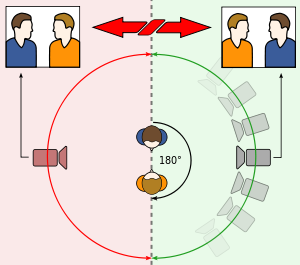After actually filming our Reservoir Dogs task, which proved to be a challenge in itself, working in pairs we managed to edit it; much hard work was put in and in quite a short space of time. Here is the final artefact edited by Charles and I:
The actual filming of the artefact didn’t go as well as it could have gone, mainly due to the very limited time that we had to film. Because of this a lot of our shots are not very good and would have benefited from being re-shot, for example some are out of focus towards the end; but unfortunately due to time restraints we had to move on to the next shot instead of doing another take.
When it came to editing, Charles and I struggled a bit due to the fact that we had limited experience and hadn’t never really edited anything like this before, so a lot of it we had to learn as we went; luckily we picked most of it up fast. It took us a bit longer to edit than planned as we struggled a bit with the title, but after spending a bit longer on it we managed to get it sorted so it was edited just as we wanted it. We had enough footage for the piece, but some of it had to be cut down as most of the closeups went out of focus towards the end; when it was all put together it didn’t look too bad as we had got rid of most of the frames that were out of focus.
We did some research and found the font used by Quentin Tarantino for the title and credits, which was Palatino. We then incorporated this into our artefact and managed to find the right colour, which was a dark yellow with a slight orange tint to it. However, by the end of the editing process we realised that the colour wasn’t quite right and changed it to a colour that was closer to the original. We also added a slight shadow to the text to try and give it the effect that was in the original, although I think that the shadow on our text was a bit too much and that it was just more of a simple black outline that Tarantino used. It took a lot of trial and error to try and get the correct size and spacing of the text; we started off with a text size that we thought was alright but it turned out to be too big so we had to downscale the size quite drastically towards the end of the editing process.
We added the effect of an old film grain over the top of all out footage to try and get the effect and also the colour of the shot closer to that of the original film; this meant that we didn’t have to use a filter because the grain effect effectively did it for us. Looking back at the footage it does look like the grain effect is a bit too much and not really necessary in places, but for the most part it achieved the effect that we wanted. We actually had to decrease the amount of effect that was present in some of the shots, such as the restaurant shot, because it was to much and ruined slightly.
Overall we were all quite pleased with the footage that we shot, considering the amount of time we had to do it. Charles and I were also rather happy with our editing of the footage, especially because it was something we hadn’t really done before and it gave us valuable experience for the future when it comes to editing our coursework in a few months time.














